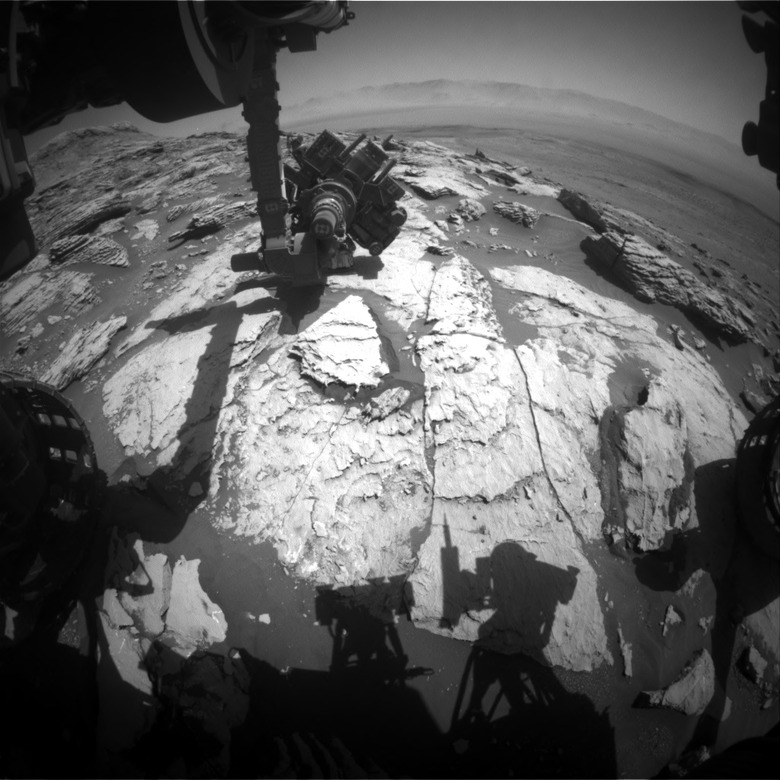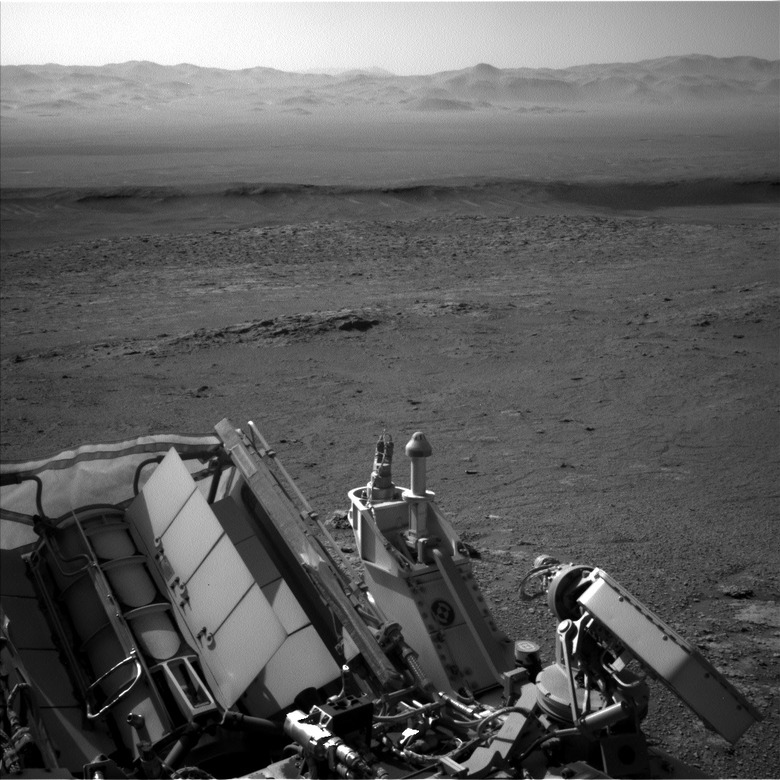New NASA Curiosity photos give a stunningly atmospheric view of Mars
NASA's Curiosity rover may not be on Mars primarily to act as a roving photographer, but that hasn't stopped it from sending back some seriously atmospheric shots of the red planet. The latest batch of images from Curiosity arrived over the weekend, and they show a haunting vista of the Martian terrain the rover plans to explore.
Curiosity is currently at the base of Mount Sharp, an 18,000 foot high mountain on Mars. It landed there back in mid-2012, and then began a slow progression across the Gale crater doing scientific work as it went.

The latest images beamed back to NASA and the Jet Propulsion Laboratory (JPL) which manages Curiosity show just what the rover is facing. They're from its left navigation camera – aka "nav_left_cam" – one of the seventeen different cameras attached to the rover. Unlike the mast cameras, which shoot in color for geological surveys, the navigation cameras are black and white.
That's only given these new images, from over the weekend, more of an Ansel Adams aesthetic. They show the edge of Gale crater, rising up across the dusty plains. 96 miles in diameter, and estimated to be as much as 3.8 billion years old, the crater is believed to have been formed when a huge meteor hit the planet, and was then shaped by Martian winds.

That leaves plenty of work for the geological rover to do. Slowly rising up Central Butte, it's examining sedimentary structures using its ChemCam instrument, as well as doing multispectral observations using Mastcam. Not all of Central Butte is accessible to the six-wheeled rover, however, and some of the work NASA and the JPL intends to do will simply involve taking photos from a distance to build up a new mosaic.
Some of those images take a multispectral approach, based on the principle that such pictures can be used to identify differences in rock types that a human eye might otherwise miss. Long-term measurements, meanwhile, track changes in temperature, pressure, humidity, and UV radiation. NASA is also looking for subsurface hydrogen.
It's not the first time that Curiosity has inadvertently stumbled into aesthetically pleasing images. The rover has previously sent back a few dramatic selfies, using its arm-mounted cameras to show itself on the Martian surface.
